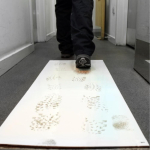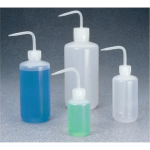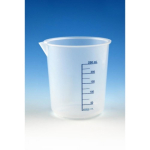Analysis Note
Protein determined by E.
Application
RNase A is used to remove RNA from DNA plasmid and genomic DNA preparations and protein samples. RNase A is also used in RNA sequence analysis and protection assays. RNase A has been used as a tool for computer-aided drug design. RNase A supports the analysis of RNA sequences. RNase A hydrolyze RNA contained in protein samples. Purification of DNA is supported by RNase A.
Suitable for: RNase protection assays Removal of unspecifically bound RNA Analysis of RNA sequences Hydrolysis of RNA contained in protein samples Plasmid DNA purification
Components
RNase A is supplied as a solution of 50% glycerol containing 10 mM Tris-HCl (pH 8.0).
Features and Benefits
Our highly stable Ribonuclease A, RNase A, is suitable for removal of RNA, RNA sequencing, and DNA purification.
General description
RNase A, Ribonuclease A, is an endoribonuclease that cleaves the phosphodiester bonds of single strand RNA after pyrimidine nucleotides. It attacks at the 3′ phosphate end (For example pG-pG-pC-pA-pG will be cleaved to give pG-pG-pCp and A-pG). The highest activity is exhibited with single stranded RNA. RNase A is a single chain polypeptide containing 4 disulfide bridges. In contrast to RNase B, it is not a glycoprotein. Ribonucleases do not hydrolyze DNA, because the DNA lacks 2′-OH groups essential for the formation of cyclic intermediates. RNase A can also hydrolyze RNA from protein samples. RNase A can be inhibited by alkylation of His12 and His119 and activated by potassium and sodium salts. RNAse is inhibited in the presence of heavy metal ions. RNase is also inhibited competitively by DNA.
RNase A is an endoribonuclease that attacks at the 3’;OHphosphate of a pyrimidine nucleotide. The sequence of pG-pG-pC-pA-pG will be cleaved to give pG-pG-pCp and A-pG. The highest activity is exhibited with single stranded RNA.
Other Notes
Activators of RNase A include potassium and sodium salts. RNase A can be inhibited by alkylation of His12 or His119.
Unit Definition
A major application for RNase A is the removal of RNA from preparations of plasmid DNA. For this application, DNase free RNase A is used at a final concentration of 10 ug/mL.Boiling stock solutions of this RNase A product to inactivate residual DNase is not necessary and may cause precipitation of RNase and possible loss of enzymatic activity. If an RNase A solution is heated at a neutral pH, precipitation will occur. When heated at a lower pH, some precipitation may occur because of protein impurities that are present.








